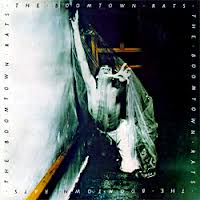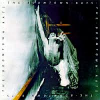 Originally published by L.S. Media. September 27th 2012.
Originally published by L.S. Media. September 27th 2012.
The history of the Punk movement would not be complete without the influence of the bands that came from across the Irish Sea, took Great Britain by storm and who in one way or another become heroes to a generation that transcended politics and religion and yet who left their own indelible mark on the national conscious in the late 1970’s and early 10980’s.
In the North, the Irish people had the ordinary, the cheerful but ultimately brilliant The Undertones from Derry and in the South, just down the road from the bustle of the capital of Dublin, they had six lads, a superb if laid back piano player, a mean playing drummer, two guitar players who stormed and strung out every note possible, a cracking bass player and the front man who would be seen as one of the defining lead men in Punk/New wave and who became a Sir.
The Boomtown Rats were dangerous, exotic, they wrote songs that strove to be different and gave voices to those that in a different era would have been shunned, forgotten. It was their timeless honesty that made them edgy, distinctive and ultimately popular and brilliant.
September 1977 saw the eponymous debut album by the band and for eight years and six records they were one of the best bands around and still today should be considered one of the best groups to have come out of Ireland and Europe as a whole.
The first Boomtown Rats album kicks off unusually but quite brilliantly with a fast drum pattern by Simon Crowe and from there that five second drum roll announces to the listening world that The Boomtown Rats are a band making a statement of musical intent. They were a group of six musicians who not only could play music well, as opposed to some of the less fashionable punk bands making their selves known during 1977, but they also could write songs that suited the time of upheaval and changing personal taste in the generation growing up in isolation on the streets of London, Birmingham, Liverpool, Derry and London.
The opening track of Looking’After No.1 owes much to the vocals of Bob Geldof as it does the guitar playing of Garry Roberts and Gerry Cott. It drives at a tremendous pace through the grooves of the record and suggests the fragility of such a blasé statement of being in it for your own self- gratification. The quick burn out as the person going after everything they can and hang everybody else’s feelings is all too short, too bitter.
The opening line of “The world owes me a living…” can be seen as direct reference to Bob Geldof’s observations of how some teenagers and even the older generation were becoming disaffected and shunned by society, when that happens the selfish mentality can take root. If not accepted by society, if told you are continually worthless then you go out to prove it, to ignore what is going on around you and in 1977 the seeds that had been breeding discontent started to overflow. It might have taken four more years to come to fruition but 1981 saw the result of what had been building up and the damage that ignoring a section of society and their dreams could do as it turned to resentment.
Whereas North of the country, The Undertones were writing songs that were rooted in their normality and having fun, despite coming from the part of the country that was tearing itself apart. The Boomtown Rats were more street savvy, more astute than their fellow punk fans in their North.
Although the debut album was not going to be the bands best album by a mile it nevertheless introduced the band to a scene that was desperate for yet another band that was able to play, to give a passionate display of their music and provide good copy in the musical magazines off the day. What marks the album out after 35 years is the records still have meaning, they could still be written today and no-one would bat an eye-lid at the controversial and in some cases seedy lyrics contained. It was that seediness, the utter truth of their lyrics that strides across the first album. Mary of the Forth Form is an excellent example of that. The song’s lyrics deals with the idea of young school girl expressing her new found sexuality and the repercussions of her actions as she flirts with many men, starts hanging round much older people and ultimately becomes much older than her tender years, her childhood gone.
The driving guttural force of the guitars is again in evidence here and yet the very subtle piano keys of Johnnie Fingers give it the thought of desirability, the hint of the respectable in a sordid tale. Rarely do forceful guitar playing, the un-tempered voice of someone like Bob Geldof and the sound of delicate keys being played work together on a song, on Mary of the Fourth Form, it is the stuff of legend. A song that somehow should have been recorded later in the band’s career, so complex, so youthful and yet so powerful that it makes a mockery of the idea of a debut album where you are trying things out and finding your voice. In short, a masterpiece of a second single from the album.
Although the album as a whole wouldn’t hit this creative high all the way through, there is more than enough evidence on offer to show why The Boomtown Rats were a great band, song as diverse as the beautiful Joey’s on the Street Again which has the feel of the Irish writing of George Moore or Patrick Healy, the stunning Close As You’ll Ever Be, and the piano based I Can Make It If You Can.
The Boomtown Rats may not have been to everybody’s taste but the music world of 1977 would have been a lot poorer without them and they paved the way for other bands from the country to be taken to the collective hearts of those across the water from Dublin Bay.
A debut album is supposed to be the one a band have been writing all their lives, in this case it seems that Bob Geldof, Simon Crowe, Johnnie Fingers, Pete Briquette, Gerry Cott and Garry Roberts had been taking that adage to heart and produced something that was very special and owes just a little debt of gratitude to the great Irish writers and poets who seem to litter the album and its very unique music.
Ian D. Hall.
